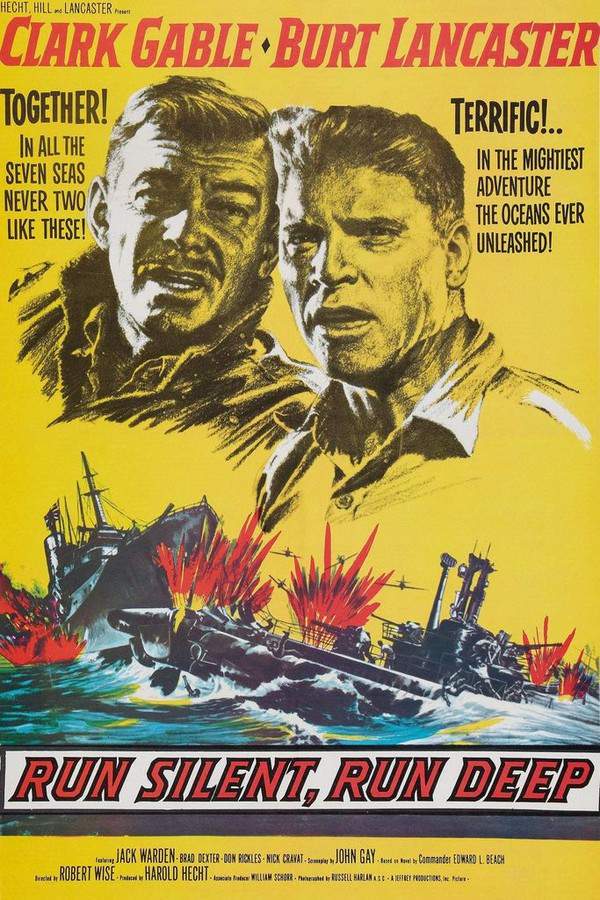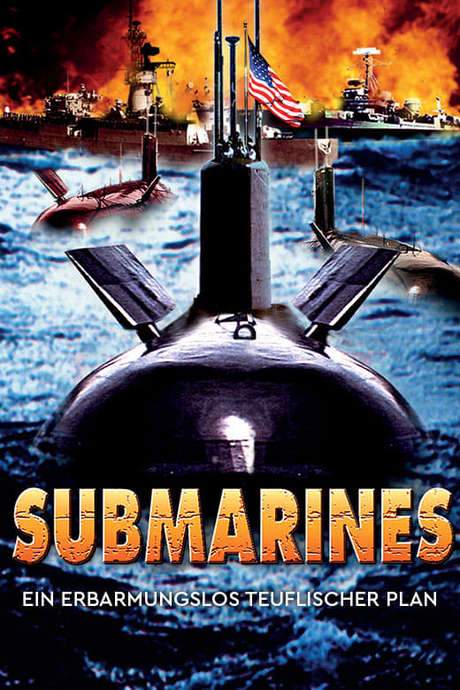
Submarine Raider
Year: 1942
Runtime: 64 mins
Language: English
Director: Lew Landers
On December 6, 1941, the Japanese carrier Hiranamu, commanded by Captain Yamanada, attacks a U.S. yacht, leaving sole survivor Sue Curry. She is rescued by the American submarine Sea Serpent, led by Cmdr. Chris Warren, who tries to radio a warning to Pearl Harbor. Yamanada jams the signal and orders his son’s aircraft to hunt the sub, but the Sea Serpent evades and dives. After the Pearl Harbor raid, the crew devises a risky plan to reveal their position and attempt to sink the carrier before it can escape.
Warning: spoilers below!
Haven’t seen Submarine Raider yet? This summary contains major spoilers. Bookmark the page, watch the movie, and come back for the full breakdown. If you're ready, scroll on and relive the story!
Submarine Raider (1942) – Full Plot Summary & Ending Explained
Read the complete plot breakdown of Submarine Raider (1942), including all key story events, major twists, and the ending explained in detail. Discover what really happened—and what it all means.
Captain Pulaski, Forrest Tucker, leads a US submarine as a Japanese aircraft carrier marches toward Hawaii, leaving a trail of tension in the wake of a brutal early disaster: a civilian yacht sunk, a distress call picked up, and three crew members escaping into a lifeboat only to be shot at by a Japanese Zero. Only one female survivor remains, and she is rescued by the submarine. Because the carrier is jamming all signals, the crew cannot reveal its location to Pearl Harbor, and the Japanese quickly intercept any fragments of information that slip through. The submarine surfaces and spots a Japanese plane, and a tense exchange ensues: they manage to strike the pilot, he crashes into the ocean, and the plane’s bombs continue to rain down, crippling the radio transmitter. The pilot’s fate is sealed as the sub makes a desperate attempt to reach Pearl Harbor with a warning, but the crucial contact remains elusive.
On land, the narrative threads widen with a personal stake. Commander Chris Warren, John Howard, and the brother of the sub’s captain, Bill Warren, Warren Ashe, are introduced through a night out that becomes a prelude to history’s most infamous morning. Bill Warren returns to Pearl Harbor with his date, only to be shot at; the assailants vanish, leaving him shaken but determined. When the couple reaches a dance club, a quiet exchange of messages hints at a looming threat, and Warren tries to relay word to his brother once he arrives at Pearl Harbor. The mood deepens as the clock ticks toward December 7, 1941, and the local news confirms that Pearl Harbor is under attack.
As the attack unfolds, the submarine’s captain faces a grim moral choice. The captain identifies a potential window to strike back at the carrier, a calculated risk that could change the course of the incoming assault. He enlists the help of a crew member who understands Japanese, crafting a decoy message that suggests a救援 mission is imminent and that the submarine possesses critical information about enemy ships. He then broadcasts a misleading signal and reveals the sub’s position to the carrier. The carrier, lured by the bait, moves toward the coordinates, while the sub releases a buoy to mark its location—an act that ultimately betrays the submarine’s position to the attacker.
The chase is short and brutal. Depth charges erupt as the carrier closes in, and the submarine sinks beneath the waves, the final moment punctuated by the captain’s haunting reminder of a day that would live in infamy:
remember Pearl Harbor
In the end, the film threads together the fates of those aboard the submarine and those on land, showing how a single decision can ripple outward during a time of war. The cast—among them Bruce Bennett as 1st Officer Russell, Philip Ahn as First Officer Kawakami, Marguerite Chapman as Sue Curry, Larry Parks as Sparksie, Eddie Laughton as Shannon, Eileen O’Hearn as Vera Lane, Rudy Robles, Gary Breckner as Brick Brandon, and John Shay as Oleson—adds depth to the narrative, grounding the wartime chaos in human stories and the high-stakes decisions that define a pivotal moment in history.
Last Updated: October 09, 2025 at 12:30
Unlock the Full Story of Submarine Raider
Don't stop at just watching — explore Submarine Raider in full detail. From the complete plot summary and scene-by-scene timeline to character breakdowns, thematic analysis, and a deep dive into the ending — every page helps you truly understand what Submarine Raider is all about. Plus, discover what's next after the movie.
Submarine Raider Timeline
Track the full timeline of Submarine Raider with every major event arranged chronologically. Perfect for decoding non-linear storytelling, flashbacks, or parallel narratives with a clear scene-by-scene breakdown.

Similar Movies to Submarine Raider
Discover movies like Submarine Raider that share similar genres, themes, and storytelling elements. Whether you’re drawn to the atmosphere, character arcs, or plot structure, these curated recommendations will help you explore more films you’ll love.
Explore More About Movie Submarine Raider
Submarine Raider (1942) Scene-by-Scene Movie Timeline
Submarine Raider (1942) Movie Characters, Themes & Settings
Submarine Raider (1942) Spoiler-Free Summary & Key Flow
Movies Like Submarine Raider – Similar Titles You’ll Enjoy
Submarine (1928) Plot Summary & Ending Explained
Submarine Attack (1954) Movie Recap & Themes
Submarine Base (1943) Ending Explained & Film Insights
Submarine D-1 (1937) Movie Recap & Themes
Submarine Patrol (1938) Complete Plot Breakdown
Run Silent Run Deep (1958) Plot Summary & Ending Explained
Battle of the Coral Sea (1959) Movie Recap & Themes
Submarine Alert (1943) Plot Summary & Ending Explained
Operation Pacific (1951) Complete Plot Breakdown
Submarine Command (1951) Story Summary & Characters
Torpedo Run (1958) Detailed Story Recap
Submarine X-1 (1968) Ending Explained & Film Insights
Marine Raiders (1944) Plot Summary & Ending Explained
Submarines (2003) Full Movie Breakdown
Seas Beneath (1931) Story Summary & Characters

















